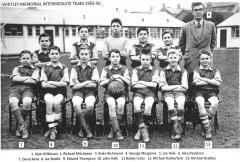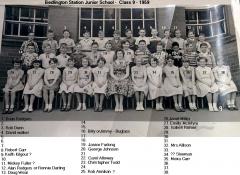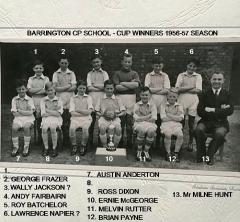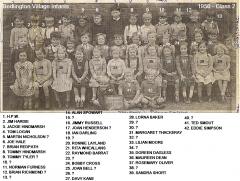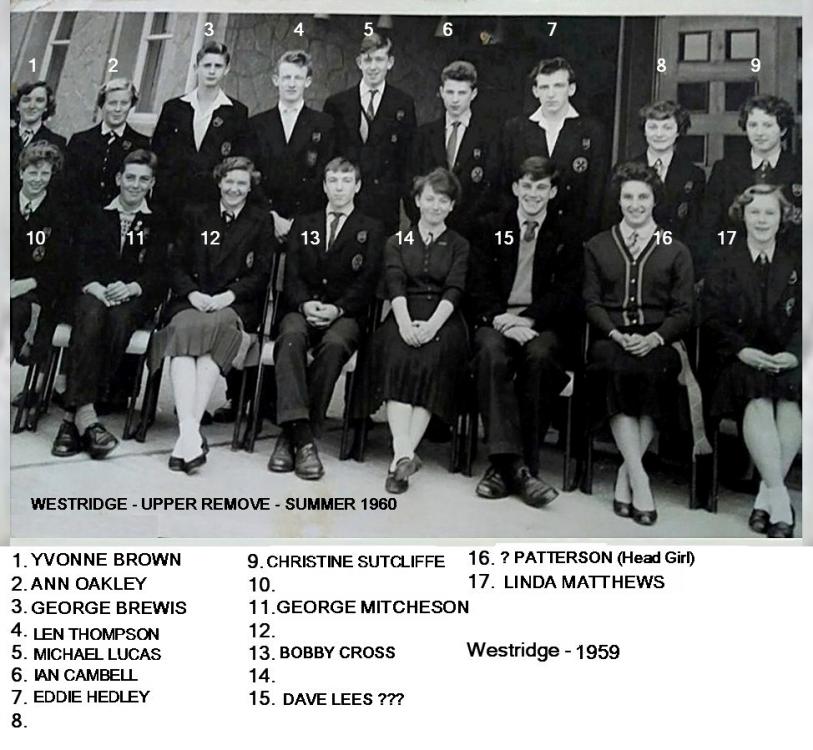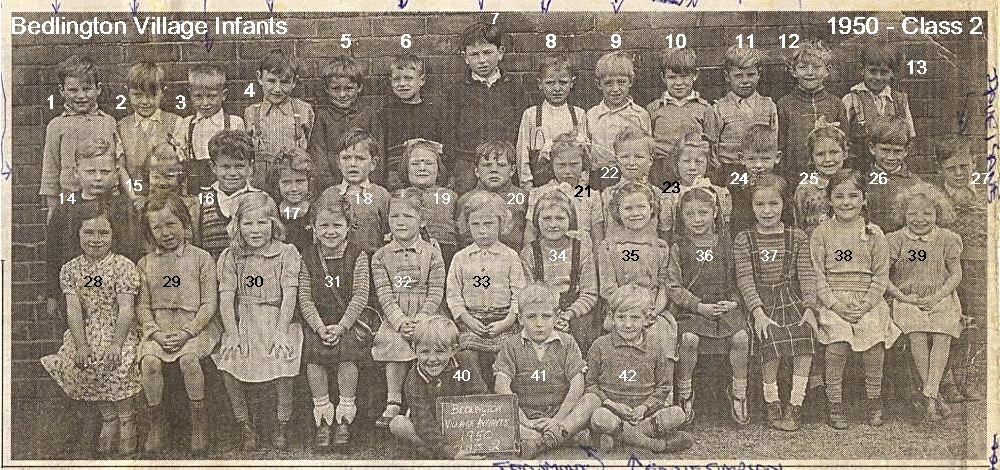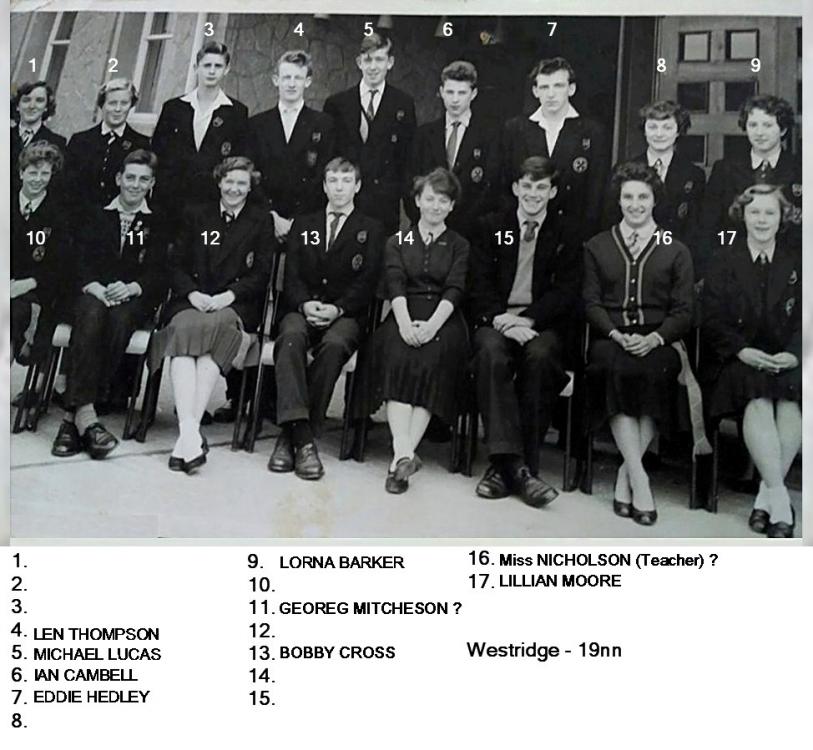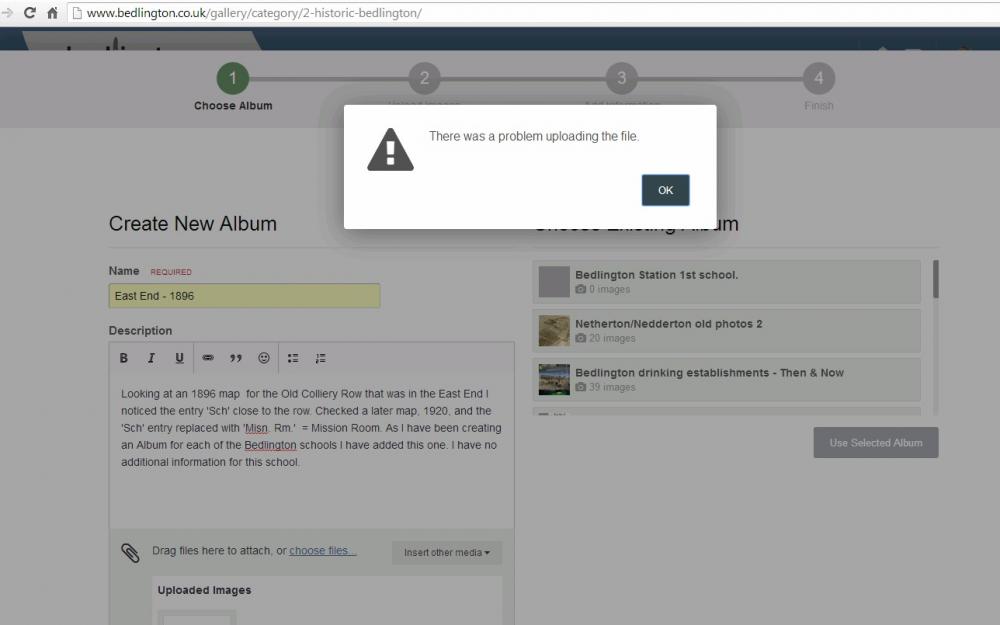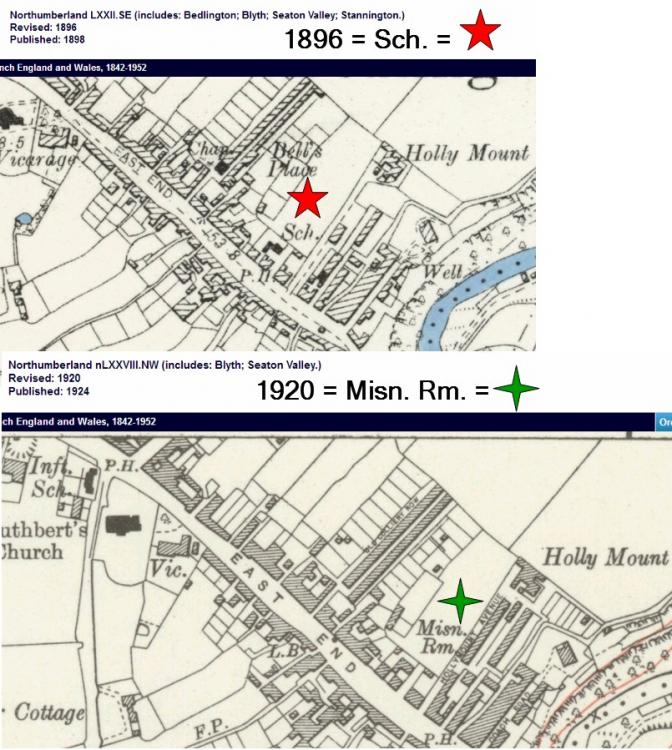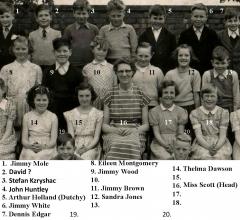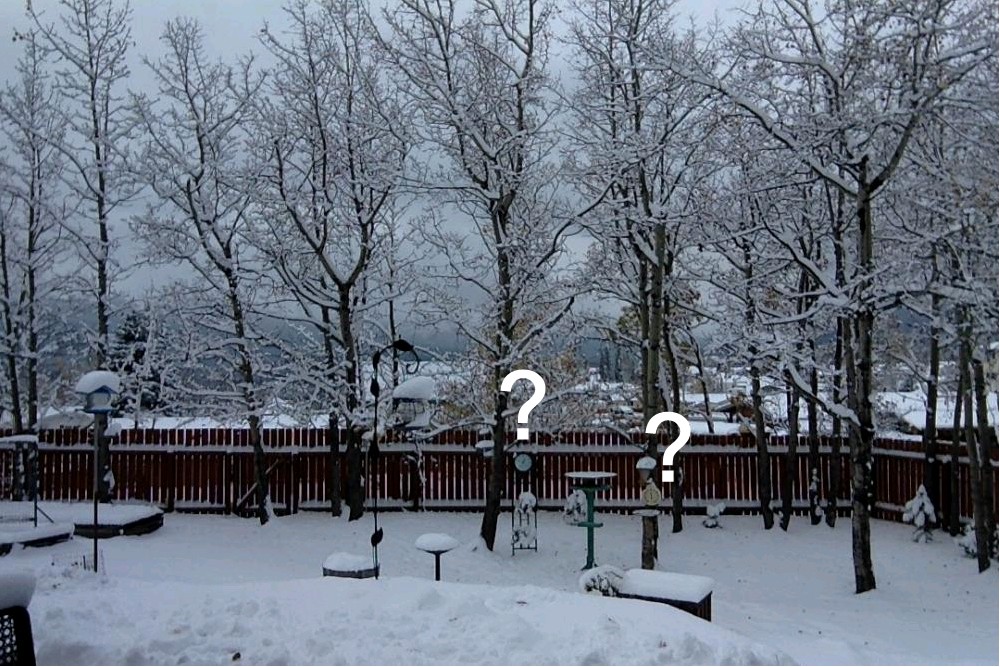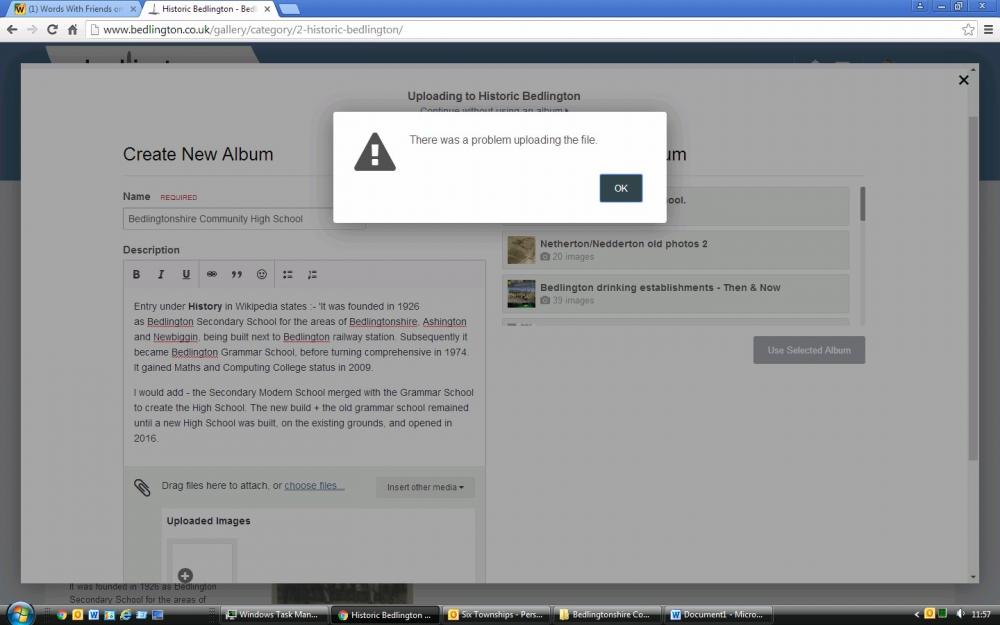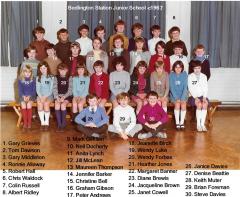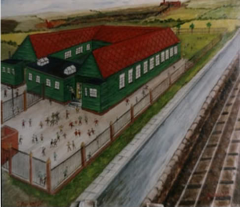
Alan Edgar (Eggy1948)
Supporting Members-
Posts
6,867 -
Joined
-
Last visited
-
Days Won
349
Content Type
Forums
Gallery
Events
Shop
News
Audio Archive
Timeline
Everything posted by Alan Edgar (Eggy1948)
-

Westridge - End of term class photos
Alan Edgar (Eggy1948) replied to Alan Edgar (Eggy1948)'s topic in History Hollow
Vic - I've added the names to the photo and updated the entry in the album - Gallery-Historic Bedlington-Bedlington Village School. If any of them have to be corrected or updated then just put a comment in the album and I will update. -

Westridge - End of term class photos
Alan Edgar (Eggy1948) replied to Alan Edgar (Eggy1948)'s topic in History Hollow
CL your right - just got a response from Allana that posted the photo :- 'Hi there the photo is off the school prefects known as the fourteen club and if you look at the blazers there small badge .It was took in 1958 my mother said .' -
From the album: Whitley Memorial School
Photo & names supplied by James. -
From the album: Barrington County Primary School
Posted on Facebook, Barrington, Barnt' n memories and stuff!!, by Susan Humble. -

1959 - Year 9
Alan Edgar (Eggy1948) commented on Alan Edgar (Eggy1948)'s gallery image in Historic Bedlington
-

Barrington CP Cup Winners 1957
Alan Edgar (Eggy1948) commented on Alan Edgar (Eggy1948)'s gallery image in Historic Bedlington
-
From the album: Barrington County Primary School
Posted on Facebook, Bygone Bedlington,by Irene McGeorge. -
From the album: Bedlington Village School
From HPWs collection. -

Westridge - End of term class photos
Alan Edgar (Eggy1948) replied to Alan Edgar (Eggy1948)'s topic in History Hollow
HPW - George Mitcheson is a member of the Bedlington Remebered Facebook group and he has added some names to the latest photo. He did say that the photo was not Upper Remove as there are pupils from 4 different years on the photo. I replied to him saying I had no idea how the Westridge Remove system worked but had no further reply. Perhaps the answer is close to us - Bluebary or Canny Lass. I will do my best to get some more names for the Village School photo and I will (when the system allows me) add the photo, with names, into the Gallery - Historic Bedlington -Bedlington Village School album. I could pass the photo to Brian Redpath's niece but I have no idea if her uncle is still around. All the Westridge photos you have commented on, that have posted in various topics, plus a few from Facebook groups, have also been added to an album - Westridge School - End of term class photos. Update on the latest Westridge photo is - Allana that posted the photo is the daughter of No 9 Christine Sutcliffe. She says her mam has more photos so I asked her to post them :- -

Westridge - End of term class photos
Alan Edgar (Eggy1948) replied to Alan Edgar (Eggy1948)'s topic in History Hollow
HPW - would you like me to try and find out, from Bedlington Facebook sites Bygone Bedlington & Bedlington remembered, any more names or do you want this photo to stay on this site only? Otherwise HPW might be identified! Would you like the photo uploaded (when Admin sort out my current upload fault) into the 'Bedlington Village School' album on this site? If yes then with or without names added to the photo and No 1 labelled as H.P.W. ? -
Cheers John - my next guess would be that I have used all the space allocated to Eggy1948. Again I am guessing but I think my allocation of space will have to be increased and the system will have to be reloaded to pick up the new allocation. Like the technical bit we would explain to the wife when we fixed an electrical device by switching it ON & OFF when they weren't looking! I will see if I can add comments, and photos, into the Album you have created. Eggy
-

Westridge - End of term class photos
Alan Edgar (Eggy1948) replied to Alan Edgar (Eggy1948)'s topic in History Hollow
I will attempt to make contact with the originator - Allana. I did send her a comment a couple of weeks ago but no response. -
Getting back to the original posting - St. Cuthberts School. Link to the updated plans posted on Bygone Bedlington by John Krzyzanowski :- https://publicaccess.northumberland.gov.uk/online-applications/applicationDetails.do?activeTab=documents&keyVal=ODWEF2QSK2B00
-

Barrington CP c1958
Alan Edgar (Eggy1948) commented on Alan Edgar (Eggy1948)'s gallery image in Historic Bedlington
-
HPW - Thank you
-
New technology or just the old - allocated space or indexes for new album? If I create four corner slits/slots on my screen I could just slot in each photo as I go through the albums. I could use an envelope - of any size from DL, C5, C6/C5, C6, C7/C6, C7, C8, C9 and C10 under the standard letter rate as long as they aren't too thick, 5mm, or too heavy, 100g, and post the photos to the bedlington.co.uk office. Just uploaded and posted a photo in the Barrington County Primary School album. So I have gone metric and had upload success all in one day. New technology, bring it on.
-

Barrington CP c1958
Alan Edgar (Eggy1948) commented on Alan Edgar (Eggy1948)'s gallery image in Historic Bedlington
-
Are you feeding up the Turkeys Vic? Weighing them whilst feeding to see when they are ready to harvest!
-
Isn't life brilliant, errors resolved on loading images into existing Albums but now another opportunity just presents itself. Attempting to create a new Album in 'Historic Bedlington' but when attempting to upload an image (10.54 x 6.84 ins = 237KB) at the ' Stage 1 - Create New Album - Drag files here to attach, or choose files...' I am returned with - 'There was a problem uploading a file'. Ensured there were no other programs holding onto the file but same result. Screen dump to show the error + the photo in question attached, without problem into this posting :-
-
From the album: Bedlington Station 1st School
Posted by Margaret Corbett (nee Banner) in the sixtownships FB group - names added by Steve Davies (No. 20 on the photo). -
From the album: Bedlington Station 1st School
Posted by Margaret Corbett (nee Banner) in the sixtownships FB group - names added by Steve Davies (No. 30 on the photo). -

Barrington County Primary
Alan Edgar (Eggy1948) commented on Alan Edgar (Eggy1948)'s gallery image in Historic Bedlington
Barrington County primary School, replacing the village school, was built in 1913, away from the colliery, close to Rotledge's Buildings. Information from Evan Martin's The Archive Photographs series - Bedlingtonshire :- "When the new school was opened in 1913, no one was more pleased than headmaster Ben Berkley............... Berkley had taken up the job in Barrington in 1878 and was 21 years old and stayed 44 years.He lived in the village school house until 1905 when he and his family moved to Willow Bridge, where he died in 1932. The photograph, added to the map, is from Evan Martin's book -

Barrington County Primary
Alan Edgar (Eggy1948) commented on Alan Edgar (Eggy1948)'s gallery image in Historic Bedlington

